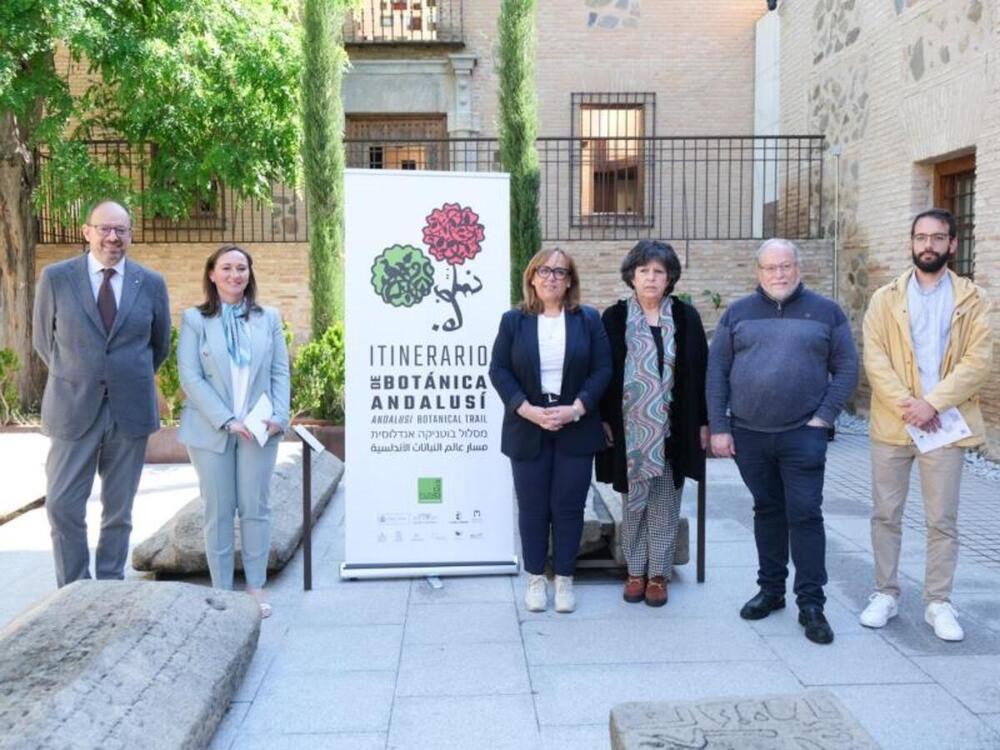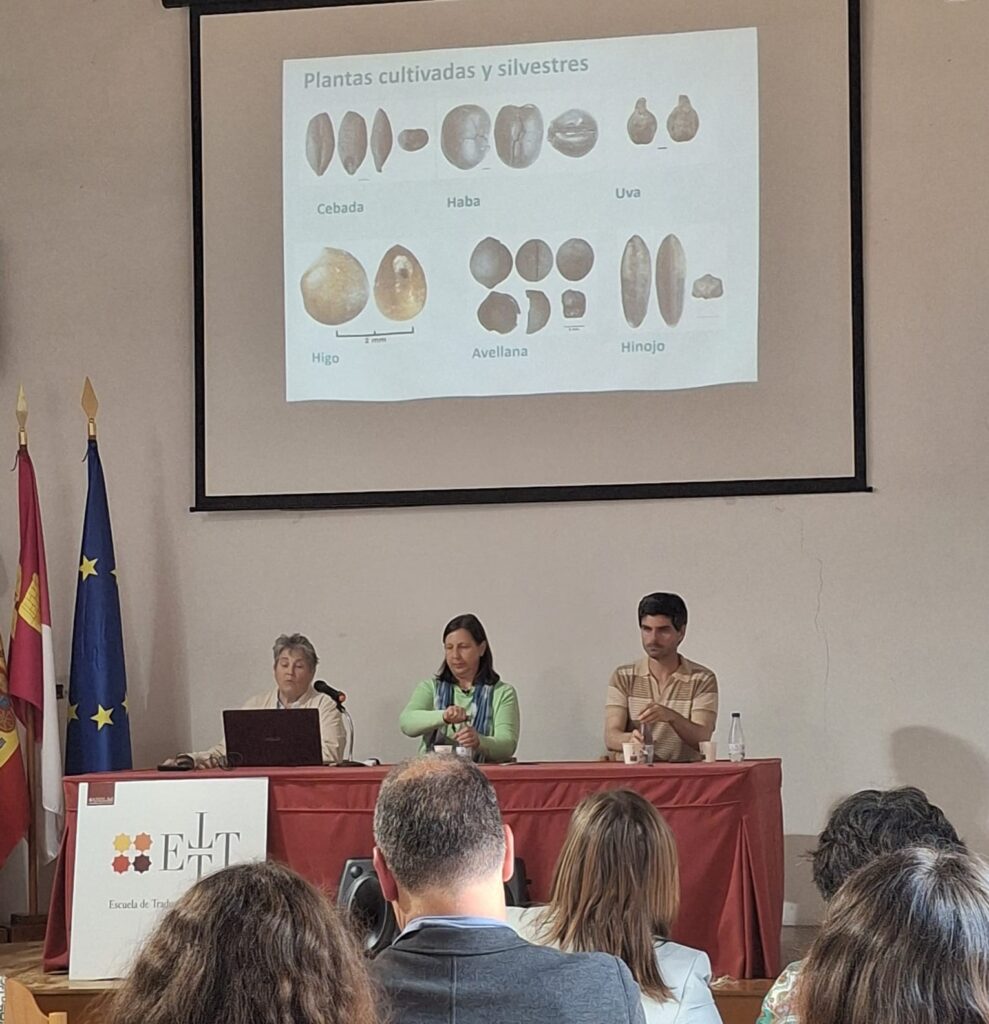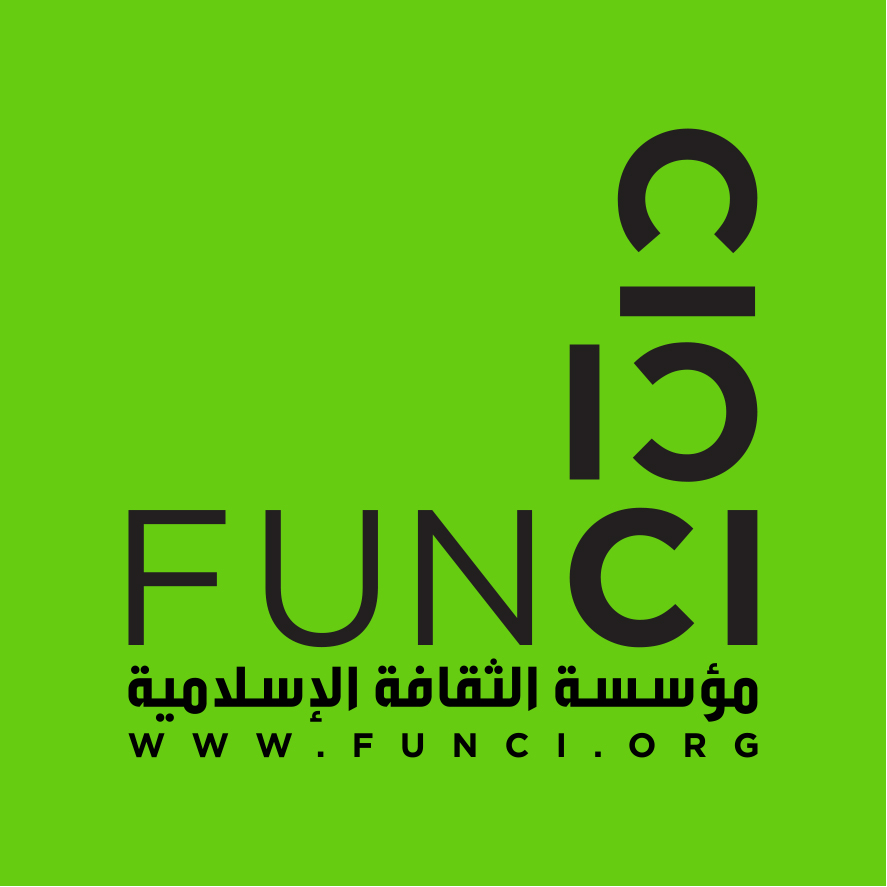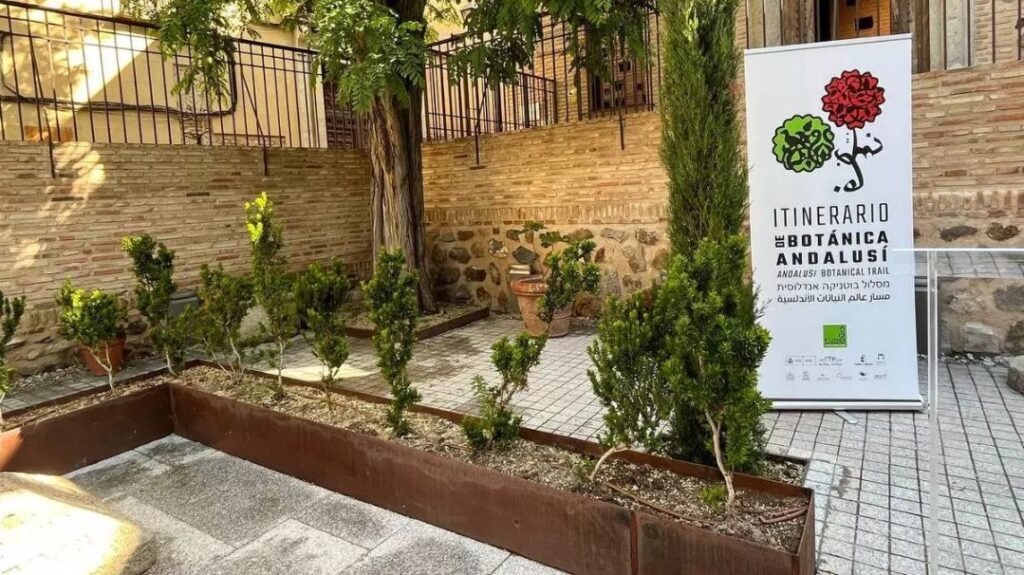Articles, Communications
Actions for the dissemination of Andalusi botany in Toledo
Article author: Fundación de Cultura Islámica
Date of publication of the article: 02/06/2025
Year of publication: 2025
Article theme: Activities, Activities, Culture, Toledo.
Inauguration of the Andalusi botany trail at the Sephardic Museum
On 12 May this year, the Andalusi botany trail was inaugurated at the Sephardic Museum of Toledo. This project proposed by the Islamic Culture Foundation (FUNCI), in collaboration with the Sephardic Museum (Ministry of Culture), the Biological Station of Torretes (University of Alicante) and the Botanical Garden of Castilla-La Mancha, establishes a dialogue between the Jewish communities of al-Andalus and the knowledge about the plant kingdom collected and generated in that period through the actions in the landscaped spaces of the museum. With the planting and signposting of these plant species, the museum becomes the second institution to host the trail together with the Museum of Santa Cruz in Toledo.
For centuries in Toledo there were three religions, but only one culture, Islamic.
With the support of the written and iconographic sources of the Hebrew and Arabic traditions, the route proposed underlines how certain species played a predominant role in the life of the inhabitants of Sepharad: the Jewish festive cycle cannot be understood without the profound symbolism of certain plants, and the medicine of the Andalusi world would not be the same without its plant base. Precisely, medical disciplines, closely linked to Arab sources, will be one of the ways of international recognition of the Iberian Jewish communities and, later, of the Sephardic communities in the Diaspora. These aspects are dealt with in the trail, which, far from fossilising this knowledge, assumes it as a living heritage for the societies of the present.

The inauguration counted with the intervention of Carmen Álvarez, director of the Sephardic Museum, Antonio Dávila, director of the Museum of Santa Cruz, Carmen Teresa Olmedo, vice-counsellor of Culture of the Junta de Comunidades de Castilla-La Mancha and Encarna Gutiérrez, general secretary of the Islamic Culture Foundation, who reminded that for centuries in Toledo there were three religions, but only one culture, the Islamic one. The attendees were then able to enjoy a guided tour led by Sergio Isabel Ludeña, coordinator of the Centre for Studies on Islamic Toledo (CETI), Segundo Ríos, director of the Torretes Biological Station (University of Alicante) and Guillermo García-Saúco Sánchez, director of the Outreach Department of the Botanical Garden of Castilla-La Mancha.
Here is a video presentation in which Sergio Isabel Ludeña explains in detail what the project consists of.
Conference day at the Toledo School of Translators
Within the framework of the inauguration of the Andalusi botany trail at the Sephardic Museum, a series of conferences were held with the aim of reflecting on the landscapes shared by the different Iberian communities during the Middle Ages. Thanks to the collaboration with the School of Translators of Toledo (University of Castilla-La Mancha) and the participation of researchers specialised in different disciplines, a comprehensive vision of al-Andalus was offered to the audience through three lectures on different themes.

These lectures can be viewed on the Sephardic Museum’s YouTube channel:
- SERGIO ISABEL LUDEÑA (Centre for Studies on Islamic Toledo, Islamic Culture Foundation): La botánica andalusí y las comunidades judías de la península ibérica. Una herencia compartida
- SEGUNDO RÍOS RUIZ (Torretes Biological Station, University of Alicante): Mirtos y arrayanes en la tradición andalusí
- LEONOR PEÑA CHOCARRO AND MARTA MORENO GARCÍA (Institute of History, CSIC): La alimentación en las comunidades judías y andalusíes a partir de la arqueobiología
- IGNACIO SÁNCHEZ SÁNCHEZ (Toledo School of Translators, UCLM): El contexto médico de la botánica andalusí: recetarios, médicos y profetas
Practical information on the ‘Andalusi botany trail’ at the Sephardic Museum
Opening hours:
- Tuesday to Saturday from 9:30 am to 8:00 pm.
- Sundays and holidays from 10:00 am to 3:00 pm.
Contact:
925 22 36 65 | comunicacion.msto@cultura.gob.es | toledoislamico@funci.org
Cover image: © Rodrigo Abad (El Diario.es).
Este artículo está disponible en Español.


